Originally posted: February 28, 2016 | Updated: February 20, 2020
About 60% of our second grade day is spent in small group instruction, and our reading block is one of the longest stretches of time when small group instruction is used. Although this teaching approach is highly targeted and differentiated, it is also intense to plan and deliver. Over the past few years, I have evolved from a teacher who dreaded small group instruction to one who fully embraces its undeniable benefits.
The driving force behind this change is organization and the development of unique small group instruction management routines. Rather than dreading every small group transition and feeling exhausted with all the reminders about supplies and groupings I had to give during our reading block, I feel like this time of day is efficient and productive.
The three tips below have helped make the management aspect of small group instruction during our reading block more…manageable.
This post includes affiliate links for which I may make a small commission at no extra cost to you should you make a purchase.
Setting the Stage: Small Group Meeting Spaces
Before we dive in, here is a peek at the two small group instruction areas used during our reading block so you have a bit of visual context when I mention them in the tips below.
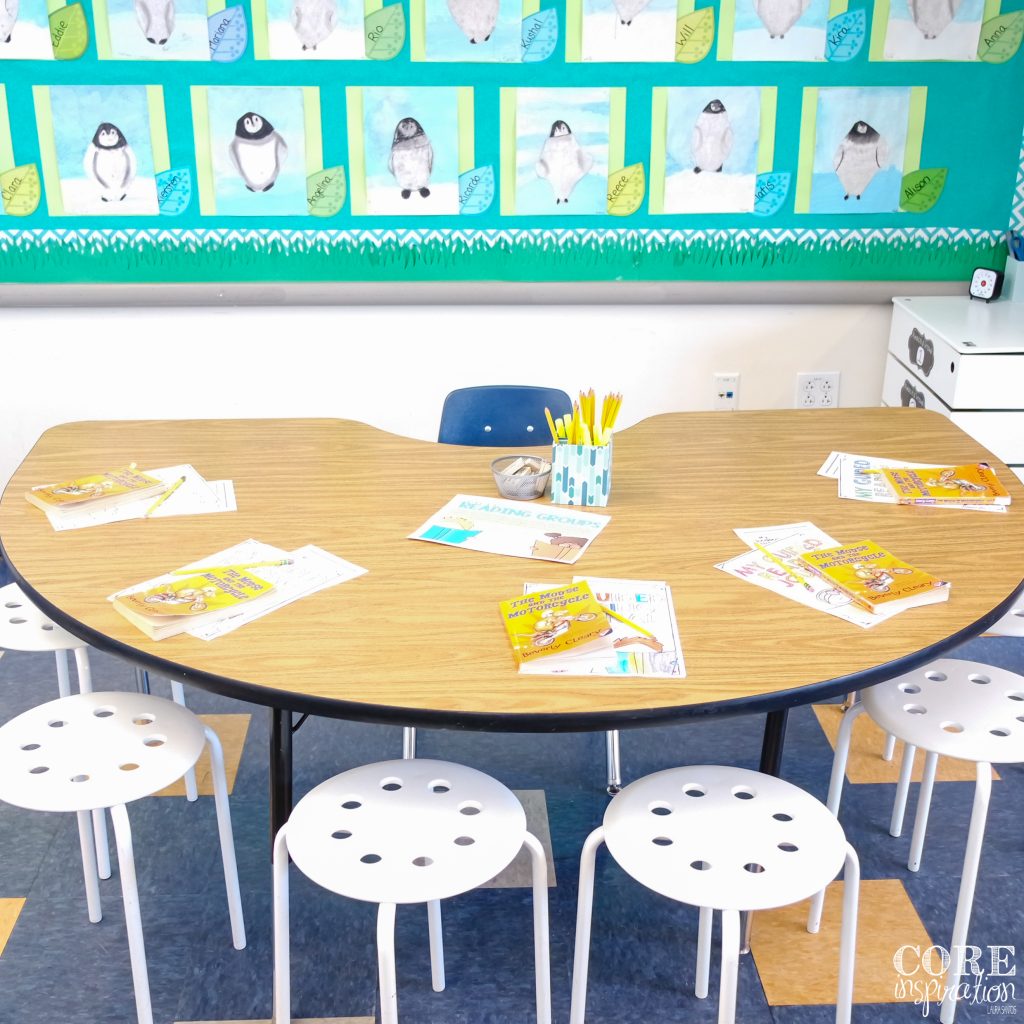
The first space is our rainbow table, where our reading aide meets with small groups four days a week. During their time with her, students are currently participating in scaffolded literature circles. Each day, they read a chapter, work on their guided reading journal (filled with a curated collection of reading response activities that give them practice with reading concepts they have mastered), and then participate in a guided literature circle discussion and activity.
When students visit the rainbow table, their supplies (literature circle book, pencil, and guided reading journal) are provided for them to make transition time more efficient.
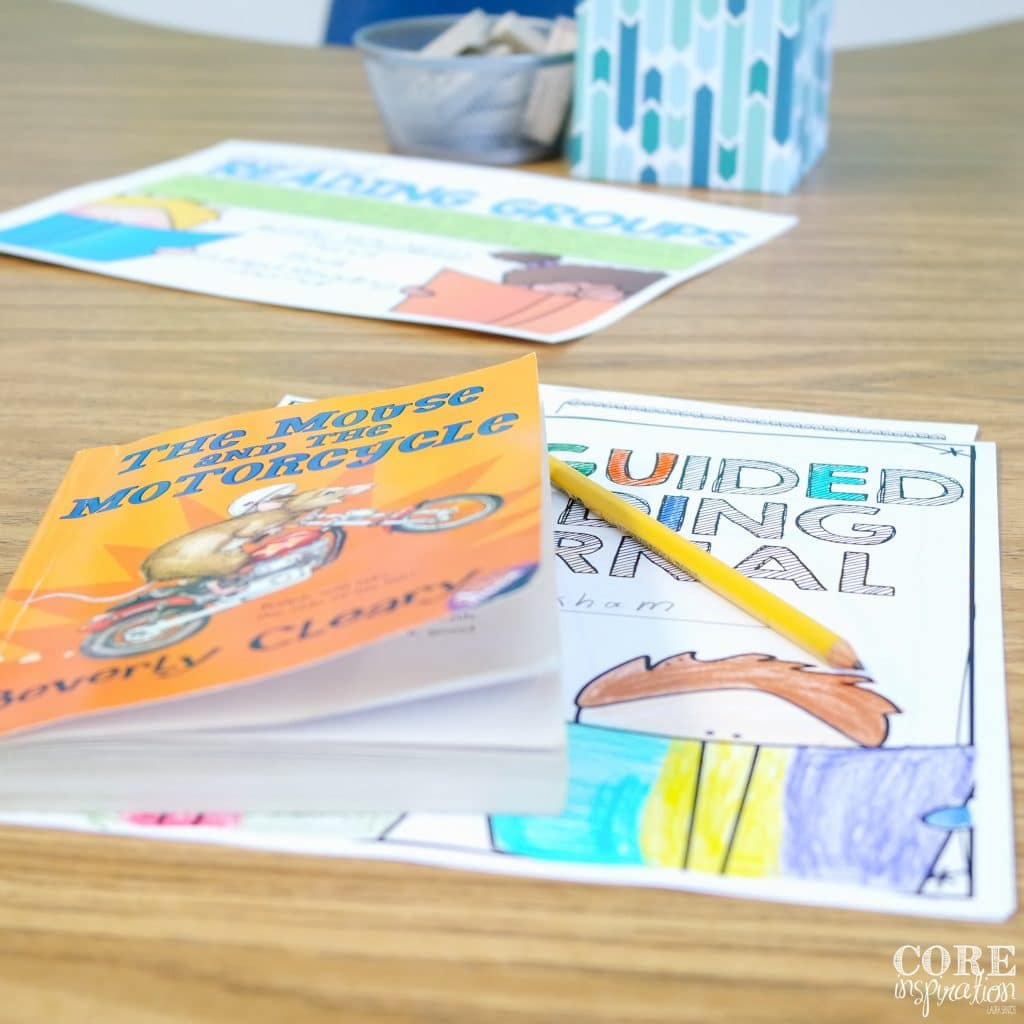
The second small group space in our classroom is called our “Mini Lesson Zone,” which is an open space where we meet as a class for mini lessons. Since this is the largest open floor space in our classroom, it doubles as a location for small group instruction when we have two small group stations in progress.
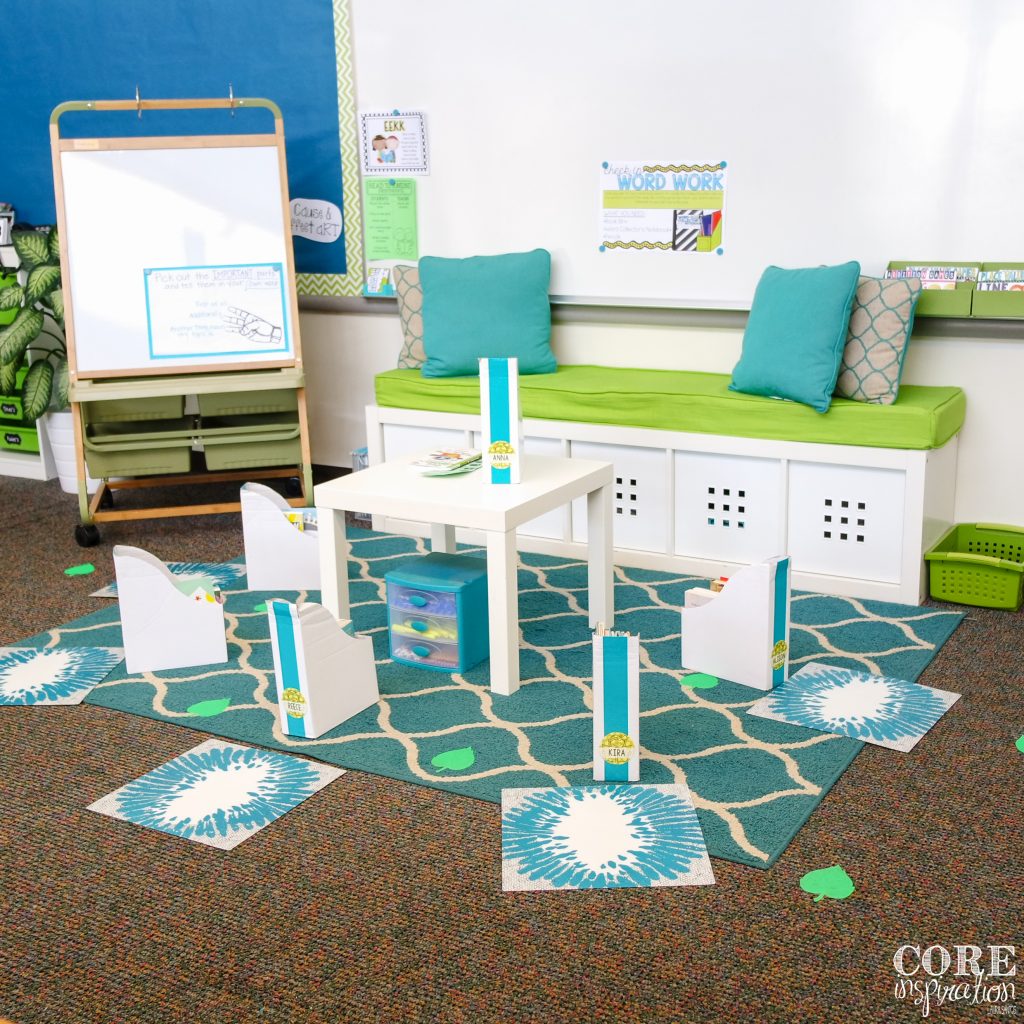
In this space, I am able to sit side-by-side with students during individual reading conferences. The table in the middle of the space can be used if there is anything we need to write down. Our easel is already in the space from the mini lesson for that day, making it easy to refer to as I host reading conferences. Anyone who’s waiting for their turn to meet one-on-one with me reads their “just right” book at one of the placemats, and then they quickly pop up and sit next to me with our backs against the bench when it’s time for their reading conference. These placemats can also be replaced with lap desks if you know the group you are meeting with that day would benefit from a more traditional small group lesson rather than one-on-one conferring.
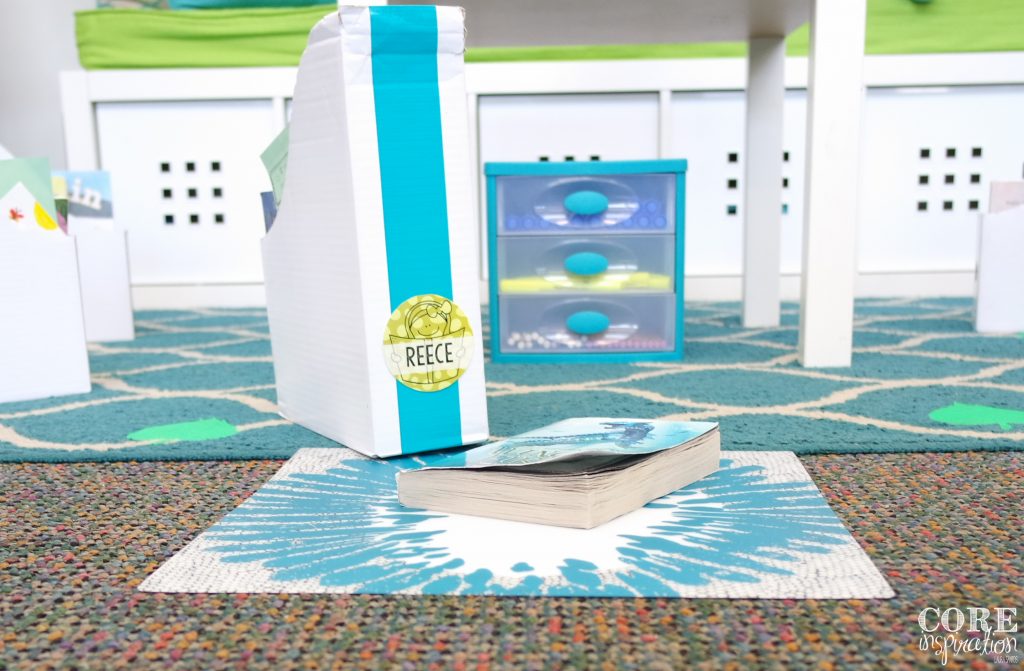
My small group instruction station begins with a very brief group follow-up to the mini-lesson, followed by one-on-one reading conferences that help students apply the targeted skill to their own “just right” reading. Students bring different supplies to my small group station each day (more detail below), but whiteboard markers, highlighters, and pencils are provided so students don’t waste transition time gathering these smaller supplies.
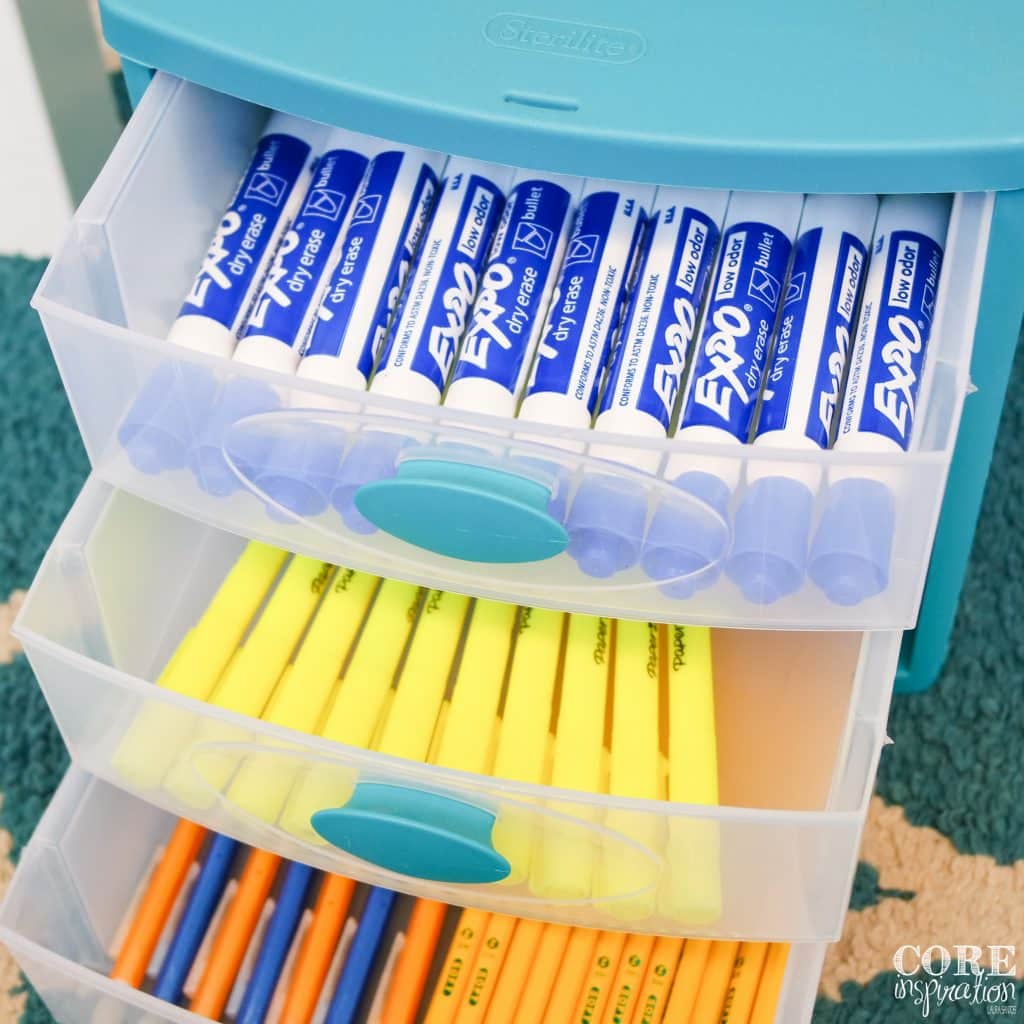
Now that you have an idea of where small group instruction takes place in my second grade classroom, here are the details on how I keep our small group instruction time running smoothly.
Tip #1: Use a Transition Slide Deck
Do your students struggle to make quick transitions during small group instruction? Mine sure did. Now, I use PowerPoint to create a series of visual reminders that display during our small group time. Saving these reminder slides, and displaying them specifically during the instructional time in which they are needed, reduces the need for posters and schedule charts that are only used for a short time during our school day.

I use this slide deck during our reading block and have a similar deck for Math Workshop, which you can learn more about in this post. These transition management slides are my absolute favorite classroom management tool. The slide deck is filled with hundreds of slides that are connected by a series of timed transitions and sound effects that signal when it is time for a brain break or for a new round of Daily 5 to begin.
At the start of Daily 5 reading, I simply click “Play,” and the slide deck keeps track of time, makes peaceful noises that signal when it’s time to transition, gives a visual countdown, and shows who should be working in the small group areas. Not only are students enamored by the fact that our slide deck keeps us on track so easily, but this tool also reduces the amount of verbal instructions given during small group time, empowering students to take ownership of their learning.
Tip #2: Use Visual Reminder Posters
Do your students work on different activities during small group instruction each day? Do they tend to forget what they are supposed to bring to the small group area from day to day? I was right there with you until I started using visual reminder signs in our small group area.
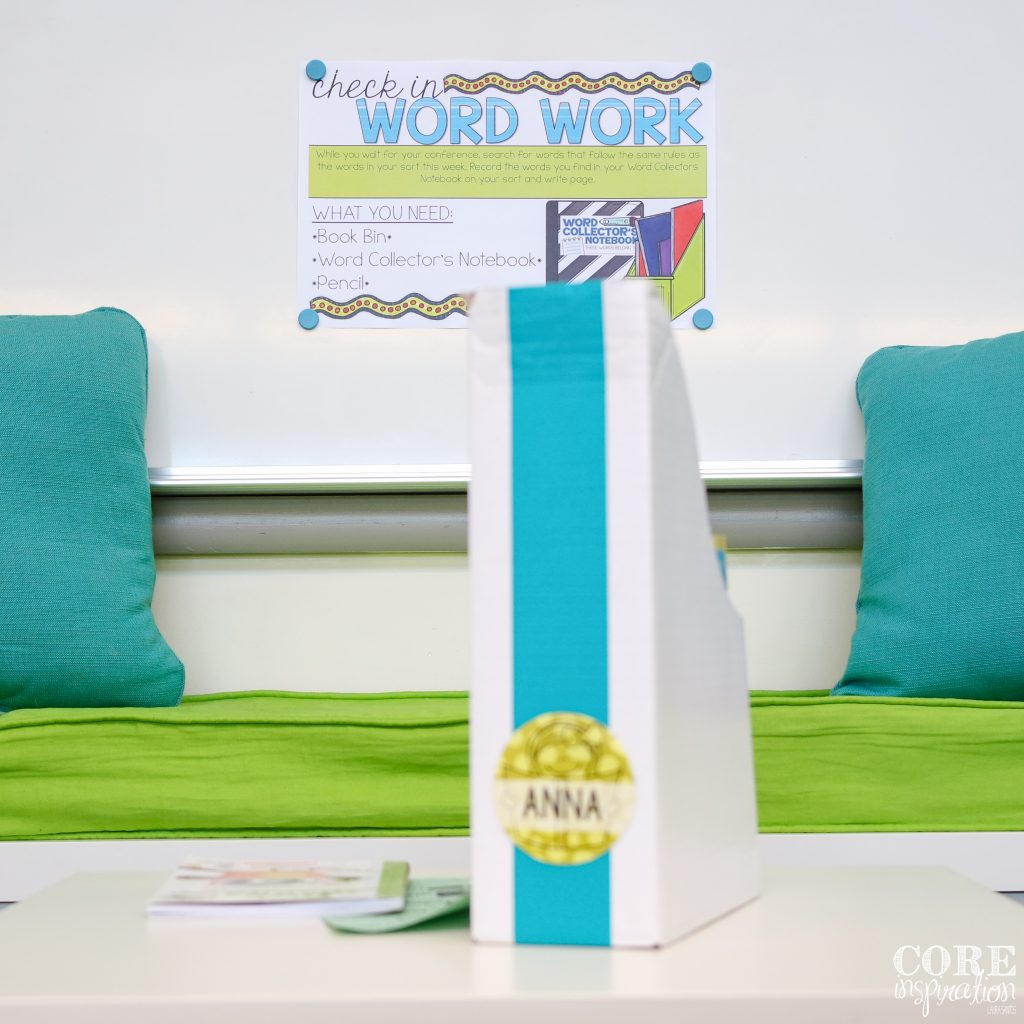
These signs remind students which activity they will work on each day, the supplies they need for that activity, and what they should do while waiting for their instruction to begin. Once again, students are more equipped to take ownership of their learning. This also saves your voice for the actual lesson…the less you have to use it for repeating the same instructions over and over, the less likely you are to sound like the teacher from the Peanuts cartoon.
These signs have been especially helpful at my small group station because students need different supplies throughout the week. I hang these signs on the whiteboard behind me near our mini lesson zone so my students can quickly check which supplies they need each day if they forget.
- Monday: their Word Pocket for differentiated word work instruction
- Tuesday and Wednesday: book bin for “just right” reading conferences
- Thursday and Friday: Word Collector’s Notebook for collecting words in context and their weekly mini-assessment
Although students are provided with supplies each day they meet at the reading aide’s station, a sign is still displayed there. This sign is simply a reminder that students should work in their Guided Reading Journal while they wait for other students to finish their reading in preparation for their group reading response activity.
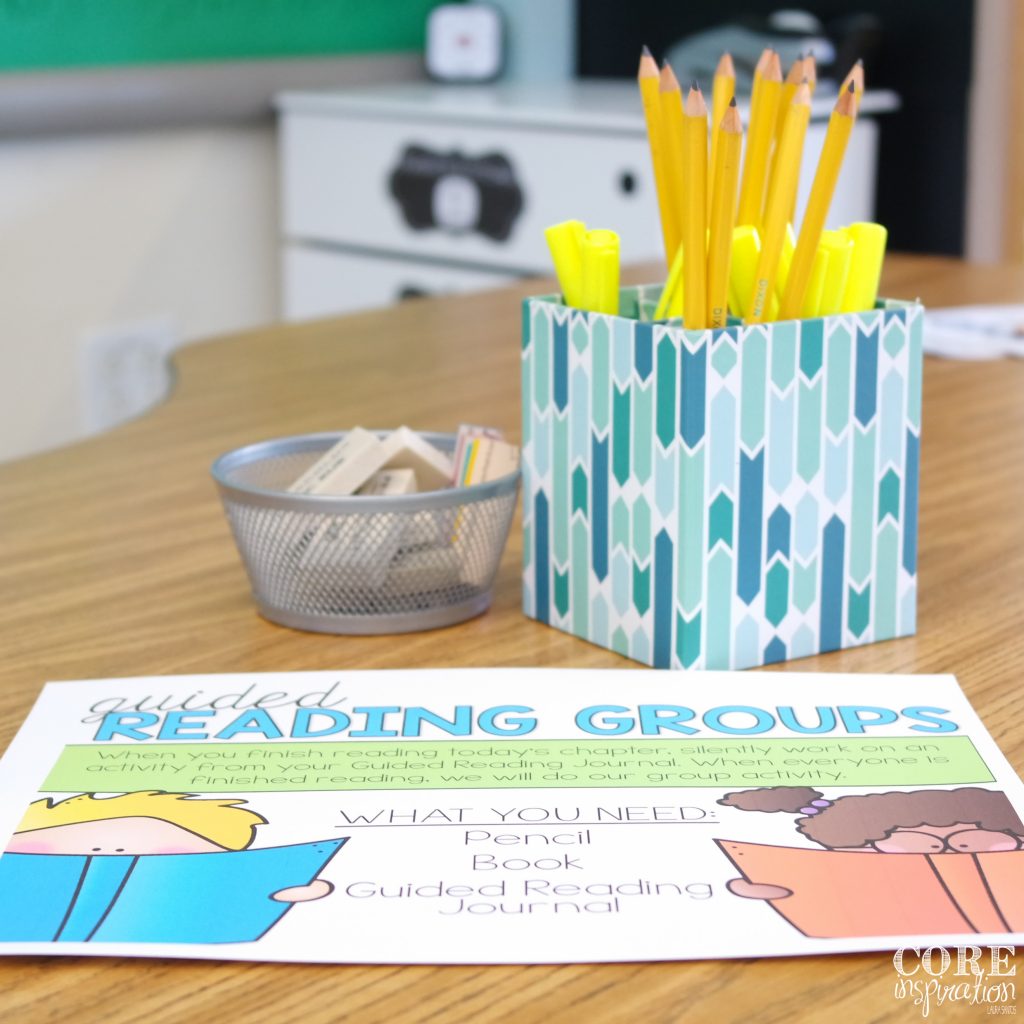
Tip #3: Reduce Visual Noise with Thoughtful Classroom Storage
Are you frustrated with your system for storing small group supplies?
Find furniture that reduces classroom clutter and keeps you organized. Each year, I purchase one larger item that will boost the organization or efficiency of my classroom. Buying one item a year allows me to purchase something that is higher-quality and ends up lasting for years to come. After ten years in the classroom, I finally have all the pieces I longed for when I first started teaching. Expecting everything to coordinate and be a perfect match for your needs from day one is unrealistic. A couple of items I use for organizing small group supplies are this 5-Bin Storage Tower from The Container Store and this bookshelf from Ikea.
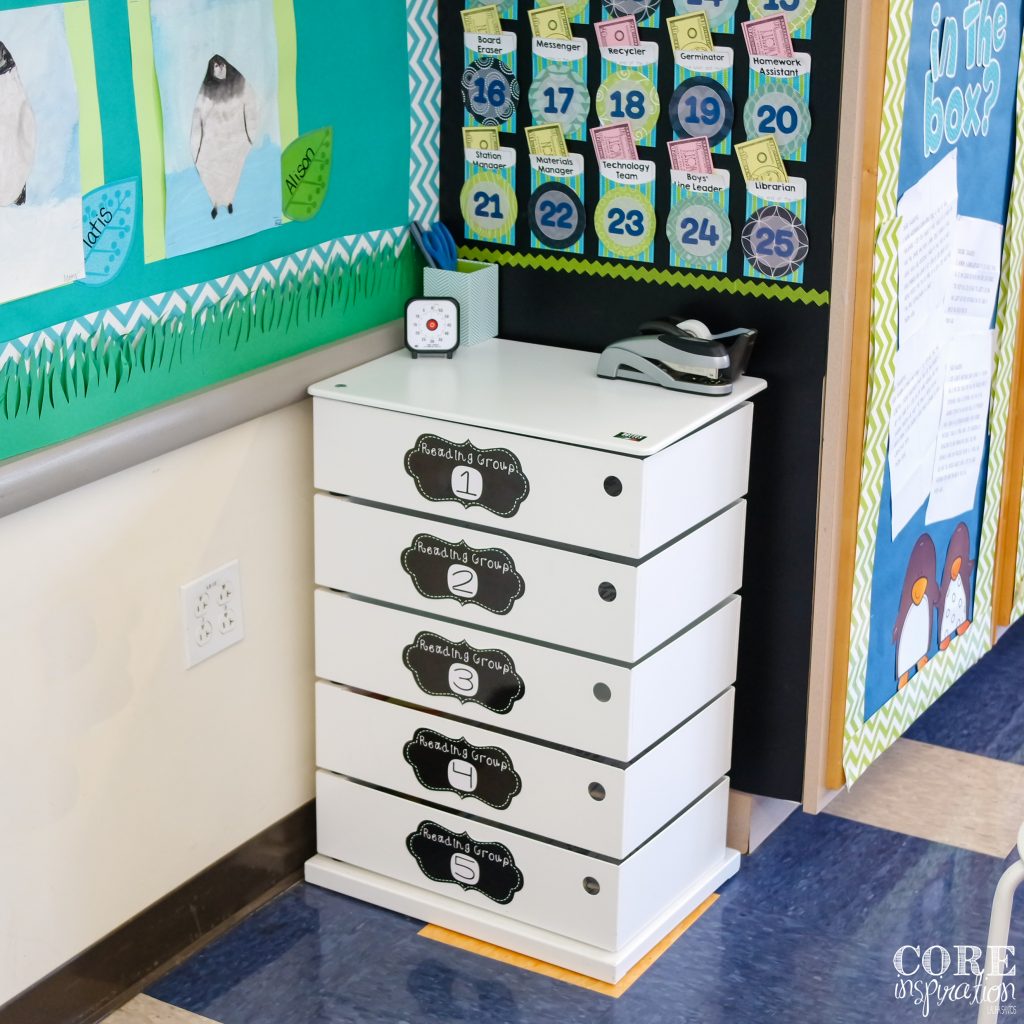
The storage tower is an easy way to keep supplies together for your reading groups without having to deal with overflowing bins that create visual noise in your classroom. If you have larger items to store, drawers like those found in this bookshelf from Ikea can also be helpful. Each day, you can gather the supplies for the small groups you will be instructing and tuck everything out of sight once small group time is over.
In my classroom, this tower is used solely by my reading aide. To keep our storage tower optimally organized, I added a group label to each bin and have each group’s literature circle books and Guided Reading Journals inside. I keep student work out of folders because it removes an extra step when I need to quickly assess student work. If work is tucked inside a folder, I tend to forget about it.
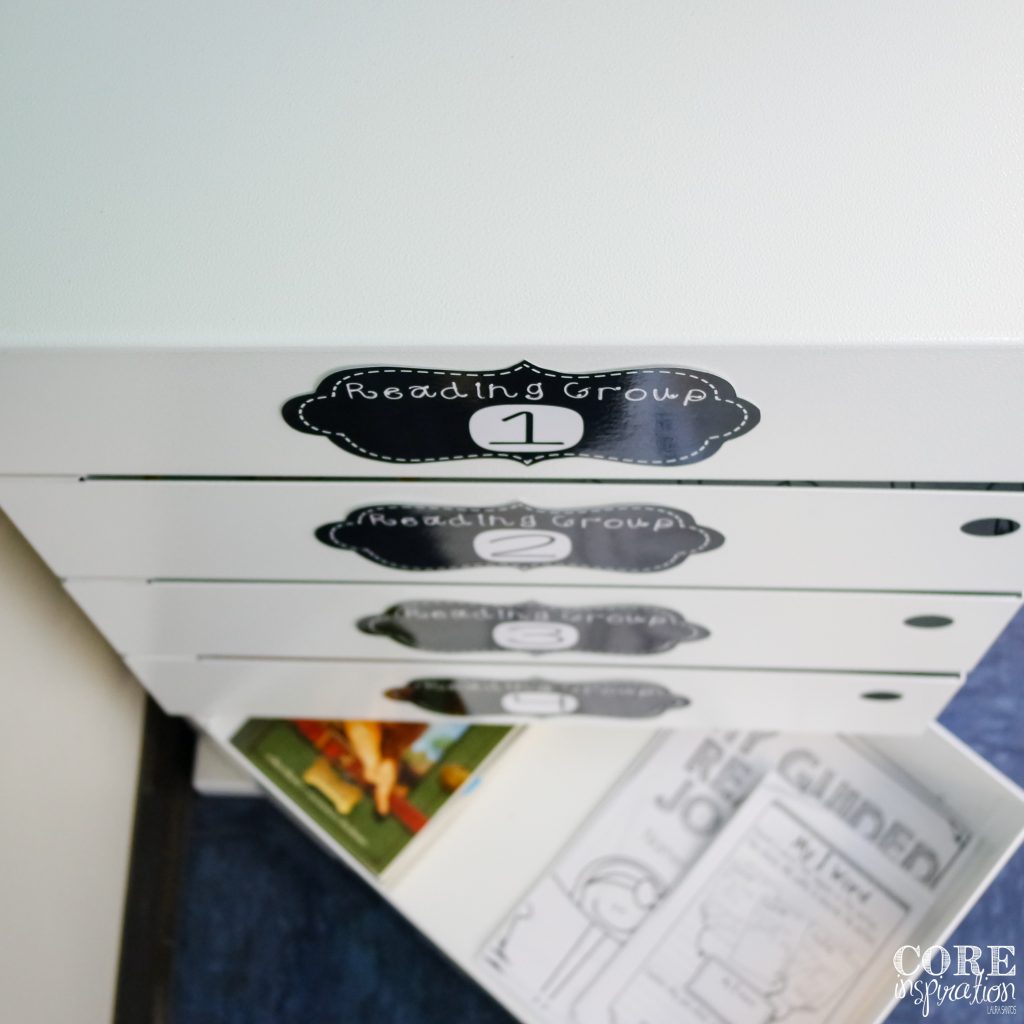
Having students use cardboard or plastic book bins helps to contain and organize the supplies they’ll be carting around during your reading block. These bins can also be tucked on a shelf when they’re not in use, freeing up more space both inside of desks and on top of work spaces.
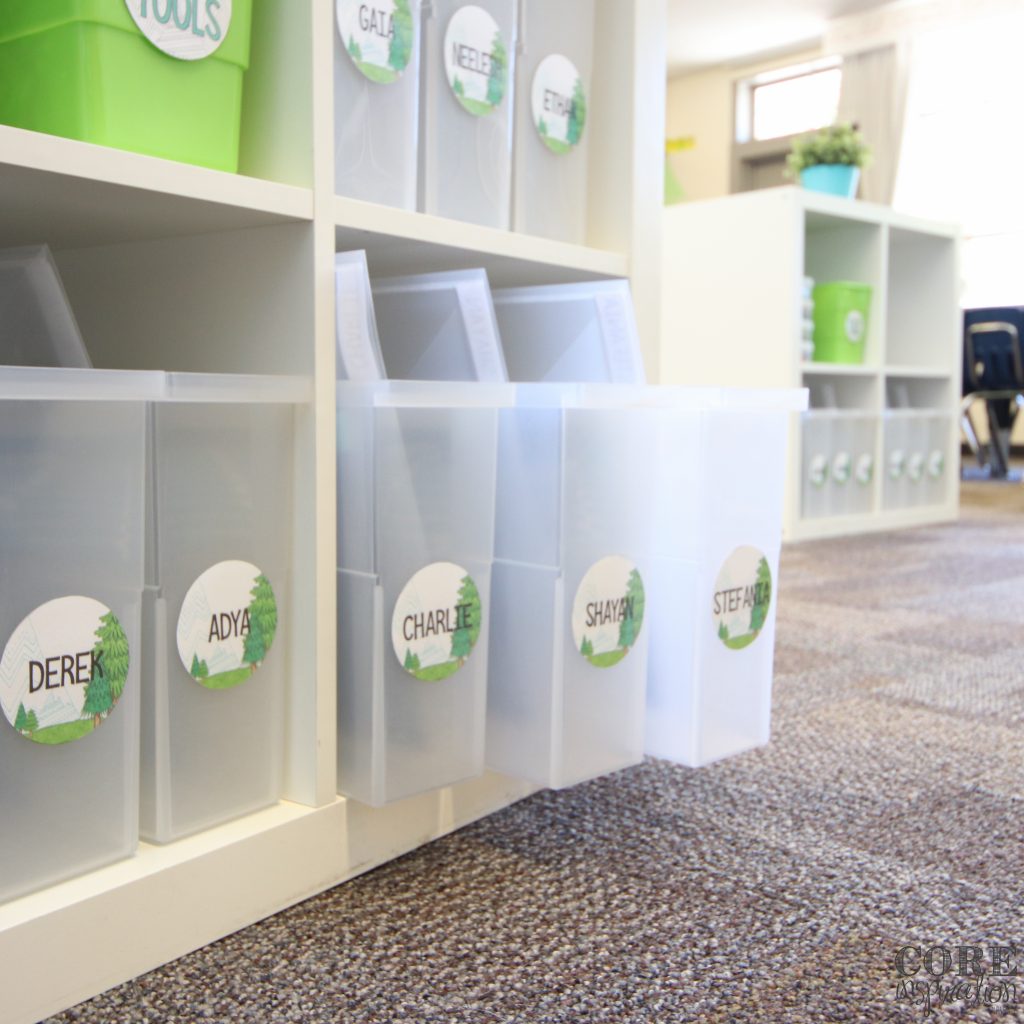
Are You Ready to Boost Your Small Group Management?
I hope these three tips are helpful as you tweak the management of small groups in your classroom. With these changes, small group instruction has become more enjoyable and efficient.
If you have any follow-up questions or ideas related to small group management, reach out in the comments below.


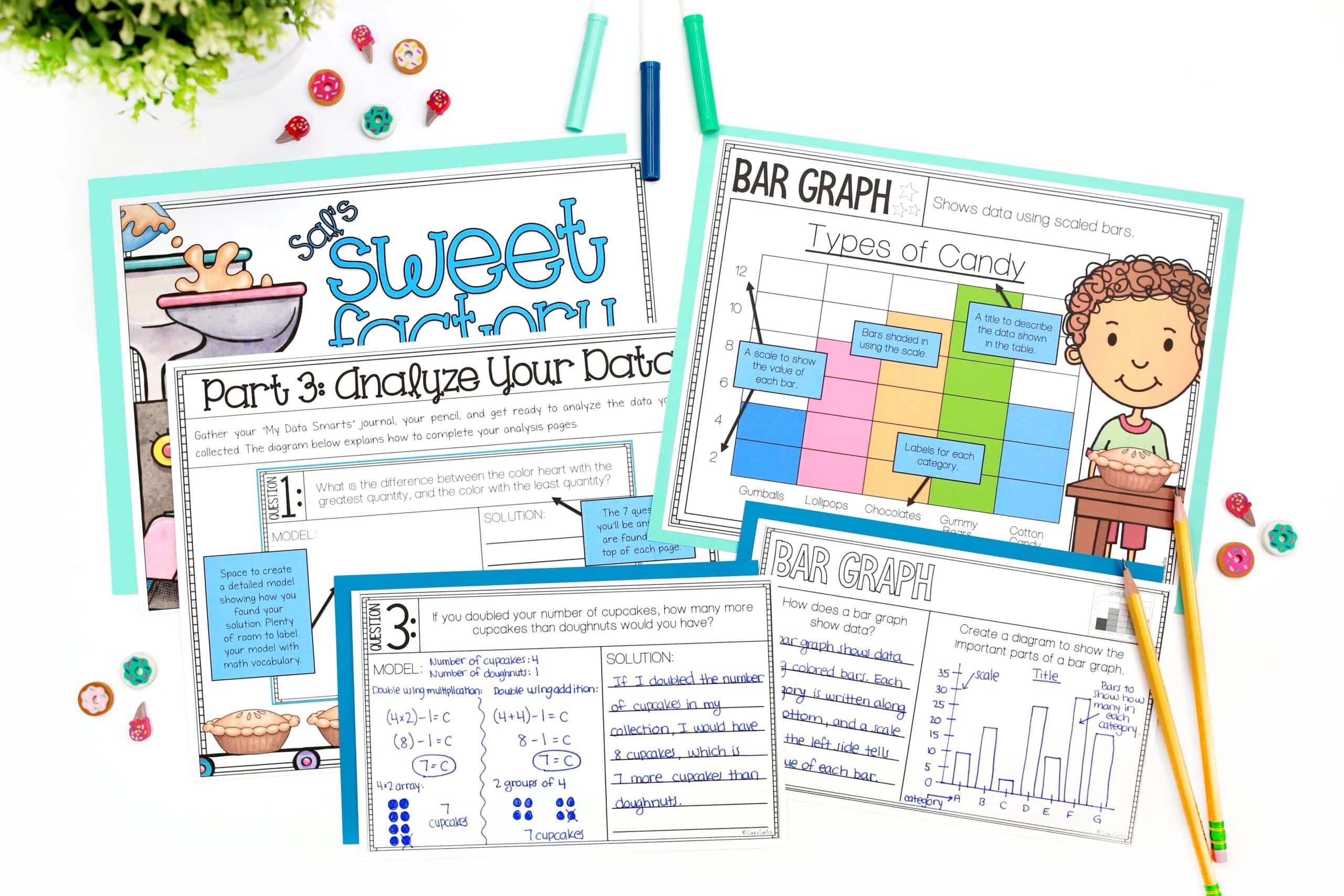
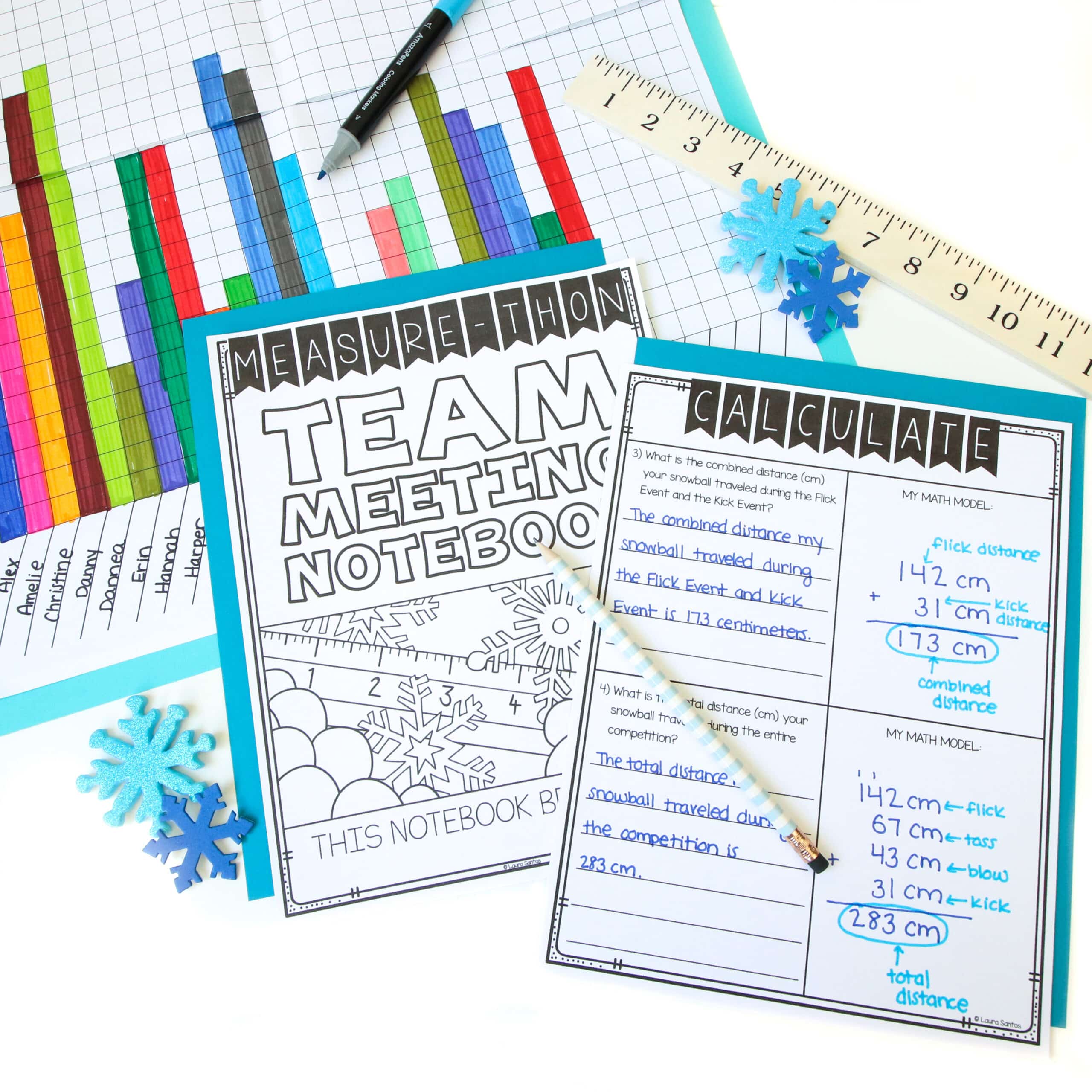

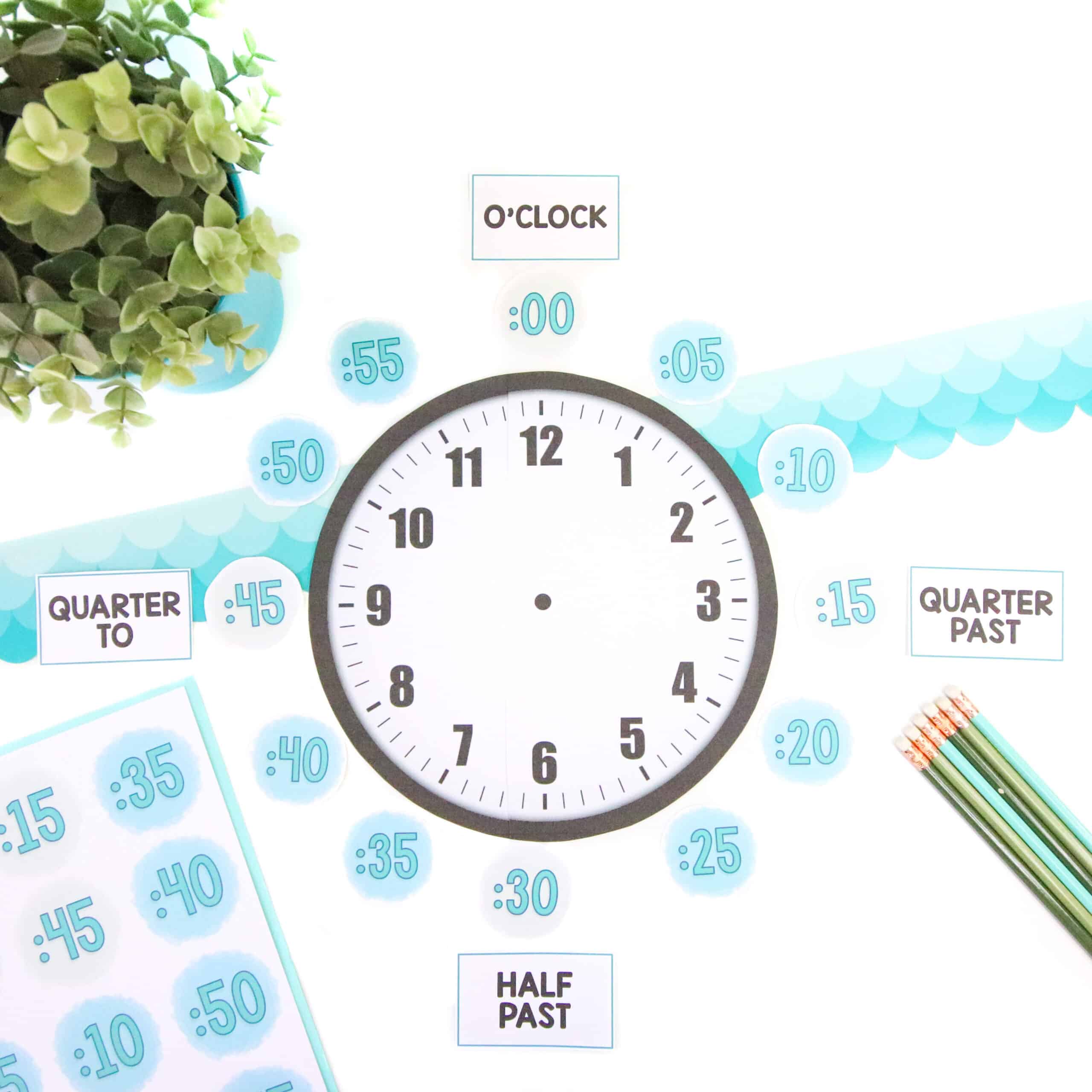
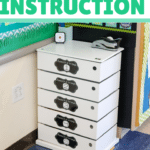
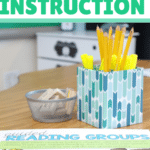
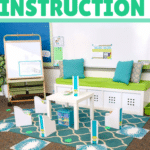
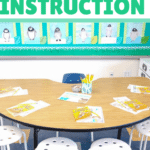
24 Responses
I love the way this is organized and the bright colours make this centre look inviting.
Thank you!
I love this! I am hopeful to start creating my space to look like this! Where did you get all the furniture, etc.?
Thanks Tara. The furniture is from a variety of places….mostly The Container Store and Ikea.
Is there somewhere that I can look at and possibly purchase your guided reading journals?
Hi Ashly, the resources I use for guided reading are from Jen Jones and The Thinker Builder (both on Teachers Pay Teachers). I just made my own cover. 🙂
What exact resources do you use for their guided reading journals? I checked out Jen Jones and The Thinker Builder and couldn’t find what specifically you would use. Thank you!
Hi Holly, I use Jen Jones’ Hello Common Core Reading Bundle and The Thinker Builder’s Reader’s Notebook Response Pages.
This is really beautiful. Where did you get the bench and the colorful pillows?
Thank you Janel! The bench is an IKEA Kallax bookcase, the bench pillow is made by my mom and the throw pillows are from Costco a few seasons ago.
Do you have the translation deck for math for sale?
Hi Cortney, I don’t have it ready for sale yet. I am working on getting it TPT ready this summer. 🙂
Where did you purchase the white letters Dream Big?
They are from JoAnns Fabrics. They were originally brown and I spray painted them white.
Yea you are very fortunate to have a readers aide. How that would help me in so many ways.
Hi Brittany, it was ver helpful! Now that I’m up in third grade, I no longer have one and I miss her greatly!
How/when did you prep your aid on ways to run the reading groups? Also, did they monitor progress for you, or let you know if a child was struggling? I love your ideas! I am a resource room teacher with a small amount of students but an extremely wide range of learning needs. Any insight or advice would be greatly appreciated!!!
When I taught second grade, I had one aid for 40 minutes 4 days a week. She rotated through other classrooms as well. Due to the fact that she was a shared aide, the school trained her. I did not have her collect data, but she did let me know if she saw something notable when working with a student. I don’t have much insight on training aides because I only had the situation described above for two years. 🙂
Warmly,
Laura
Hi, I love your classroom! Just had a few more questions about your reading journals. Do you put a page in for each chapter of the book they are reading so they fill out one page per day after reading the chapter? Also, do they get to pick any page to do or do they all fill out the same page for each chapter? Then do they discuss the chapter as a group? Thanks for your help, trying to figure out how I want to run my guided reading groups!
Hi Melissa, yes with these journals, they filled out a page per day and I had them all work on the same page. As they read and working on completing their page, I conferred with students and listened to their reading. Then, they discussed as group to wrap up our meeting. Some days, we did not get around to the discussion, so I would have them discuss without me so I was able to call the next group. I hope this provides some insight.
Warmly,
Laura
Hi! Huge fan, here. 🙂 It looks like you’ve been using Reading Workshop in your classroom (base on your IG Stories.) . Do you still do centers with RW? If so, how do you structure your reading block?
Thanks!
Kari
Hi Kari,
Thank you for the kind message. 🙂 Yes I do currently use Reading Workshop. I teach reading after recess from 10:30 – 11:30 each day. I start with a 10-15 minute mini lesson, then move into conferring or small group work for 40ish minutes, and end with students sharing their learning with their reading partner. Some days I also squeeze in a mid-workshop teaching comment – students don’t come back to the carpet for this like a mini lesson, it’s rather a quick reminder or an add-on comment that supports the lesson for that day. 🙂
I hope this insight is helpful!
Warmly,
Laura
I love this. Do you have a breakdown for reading groups like you do for math workshop?
Thank you Emily! I don’t blog about reading very often, but I did use a similar system for reading workshop. 🙂